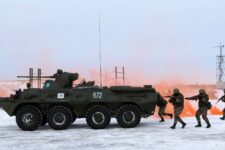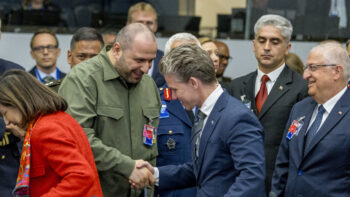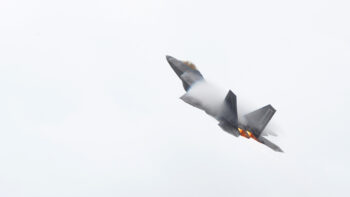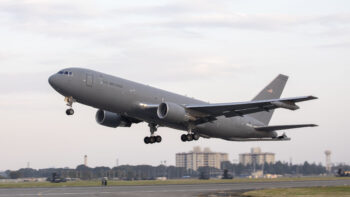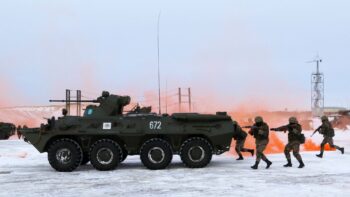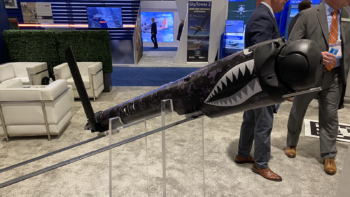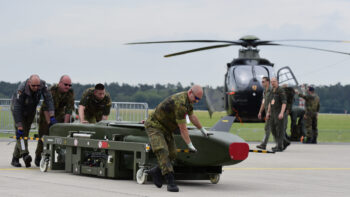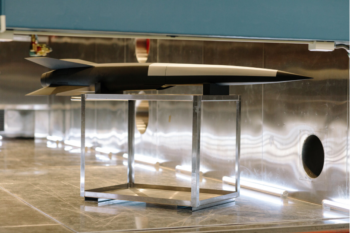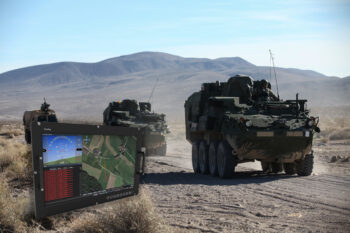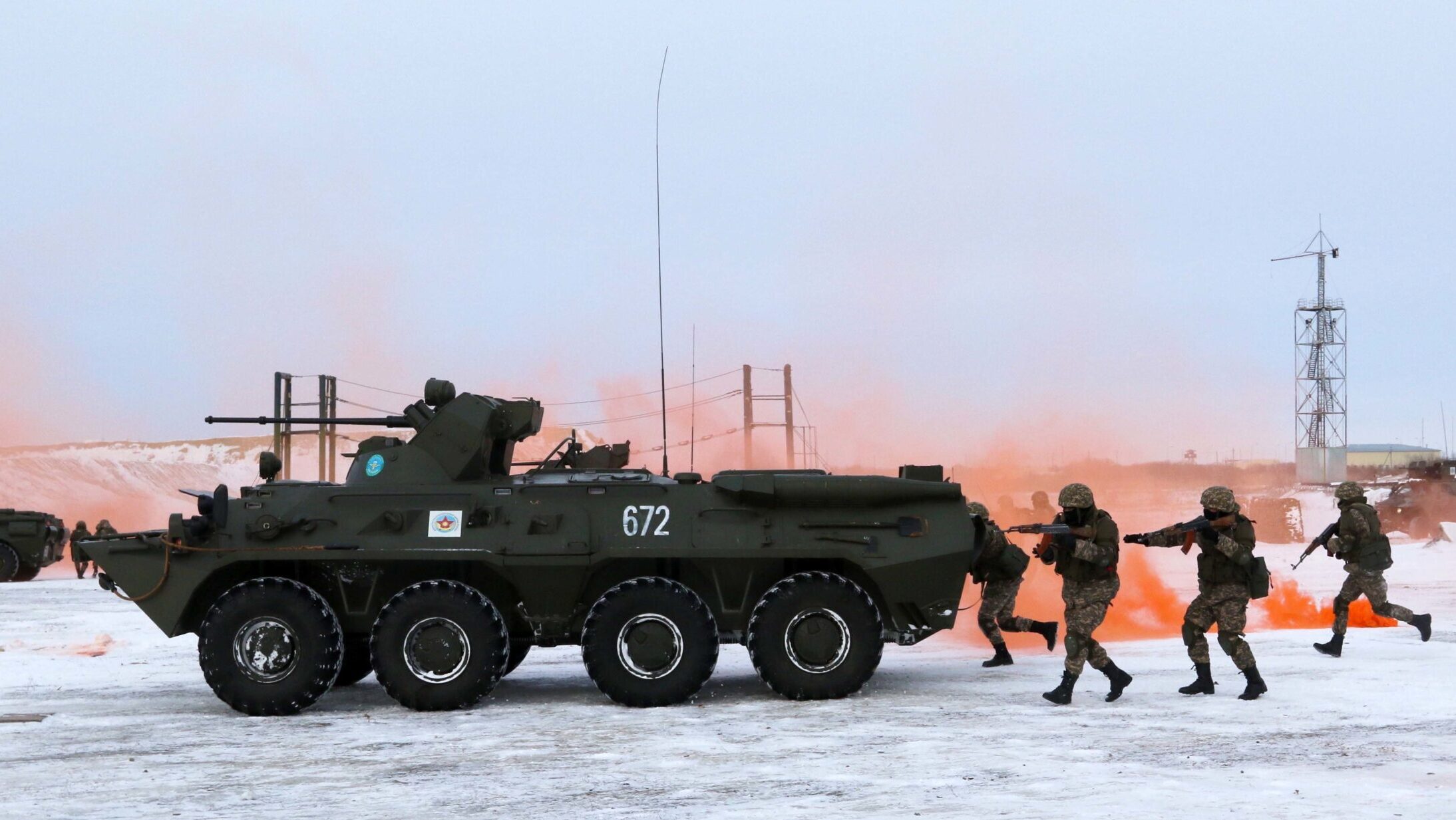
The Kazakhstan National Defense University welcomed then-Lt. Gen. Michael Garrett, the commander of US Army Central, as its guest speaker Dec. 13, 2016, in the capital city of Astana. (US Army photo by Sgt. Brandon Hubbard)
WASHINGTON — The war in Ukraine has prompted “introspection” among Central Asian nations about buying military equipment mostly from Russia, and pushed them to look farther from home for arms — from Beijing all the way to Washington, according to State Department officials.
“I would argue that’s not countries turning towards China; it’s countries turning away from Russia,” Ambassador Donald Lu, assistant secretary at the Bureau of South and Central Asian Affairs, said on a panel at the Center for New American Security last week. “And they’re not just looking at China, they’re looking at Iran, they’re looking at Europe, they’re looking at the United States. They’re having to go further afield because military equipment is just not available in the way that it was before the Ukraine war.”
Another State Department official told Breaking Defense this week that before the Kremlin’s February 2022 invasion of Ukraine, the Central Asian nations — Kazakhstan, the Kyrgyz Republic, Tajikistan, Turkmenistan and Uzbekistan — already had been “diversifying away from Russia.” But the process has been hurried along not only by the strain the war has put on the pipeline for Russian equipment and parts, but by the view of Russia’s experience on the battlefield.
“The second factor that has caused sort of a reexamination is all the five Central Asian nations have observed the performance of Russian equipment in Ukraine and have raised questions about how that equipment would perform in a regional conflict, should they have that requirement,” the official said, speaking on the condition of anonymity.
The official declined to comment on the broader political implications of Russia’s invasion of Ukraine in the region, but an analysis by the Foreign Policy Research Institute in May said Central Asian nations, as fellow former members of the Soviet Union, were spooked by Russia’s move.
“For Russia, the invasion deeply damaged its reputation and self-appointed role as the sole security manager for the region,” reads the analysis, written by Robert Hamilton, head of research at the FPRI’s Eurasia Program. “Given what the Central Asian governments, especially Kazakhstan, have seen in Ukraine regional states, they view Moscow’s motives with deep suspicion and have lost considerable faith in its military capabilities.”
Small Budgets, Key Strategic Location
Central Asia is not a large defense market. The combined military expenditure for Kazakhstan, the Kyrgyz Republic and Tajikistan in 2023 was approximately $1.84 billion, according to a Stockholm International Peace Research Institute database, by far the lowest expenditure by region that SIPRI tracked. (Figures for Turkmenistan and Uzbekistan were not available.) For comparison, the next closet regional expenditure, from Central America and the Caribbean, was approximately $14.7 billion.
But the nations sit at a key geostrategic crossroads, with Russia immediately to the north, China to the east and Iran and Afghanistan to the south. Since the US withdrawal from Afghanistan, the region has become an even more important player in the realm of counterterrorism, according to the State Department official.
“So it is one part of the world where you do get a lot of these strategic competitors kind of working in a similar place,” the official said.
The FPRI analysis notes that China has been a prime beneficiary of Central Asia’s slow pull away from Russia, and Beijing has offered attractive economic packages as well as arms deals to draw them closer. But it also notes that Turkey has a presence in defense sales as well, especially when it comes to drone sales, according to SIPRI data. As Breaking Defense has reported, Ankara has been aggressively expanding its military export portfolio in recent years.
Turkey “frankly, [has] a share that is sizeable and growing,” the official added.
The State Department official didn’t expound on Lu’s reference to Iran, and the SIPRI database makes scant mention of public Iranian exports to the region. But Breaking Defense has reported that global interest in Tehran’s indigenous, relatively cheap unmanned aerial vehicles, used in mass in Ukraine by Russia, has only grown since the beginning of the Ukraine conflict. In 2022, Iran publicly inaugurated a drone manufacturing facility in Tajikistan.
Central
As for the US, the State Department official said Washington has seen a “very high level” of interest in American-made defense products, platforms and services, but “there’s a couple of limiting factors there.”
“As you can imagine, expense is one of those,” the official said. “Our defense articles and services are fairly advanced, right?” And, therefore, tend to be expensive.
Relatedly, there are “tech release” issues, as the US is cautious when it comes to handing over high-tech equipment, presumably especially to nations that have such historically close ties to Russia and China. Coming information-sharing agreements, the official said, could help with that particular obstacle.
“So we do see that we need to balance sometimes US protection of our tech against where we’re going to be able to release those things. The Central Asians, though, are again very interested in our particular products; it’s really just a matter of making a good match,” the official said.
As such, the official said it’s unlikely that big ticket items, like fighter jets, will be part of any deals any time soon. (One of the only announcements about major US Foreign Military Sales to the region on the website for the Defense Cooperation Security Agency, for instance, was a 2020 notice that the US had approved a potential $128 million deal with Kazakhstan for airborne ISR systems.)
The official said what the US has seen, instead, are very precise requests, “the sort of smaller capabilities that tend to fill niches they have.”
“So it will be things like, ‘I need a UAV with a 20-kilometer range, with some amount of loiter time that can do X, Y and Z,” the official said. “Or I need an over-the-horizon radar, which will pick up the following kind of targets.
“I say that as an example that they’re fairly sophisticated, or at least clear-eyed, about what they’re looking for from us,” the official said.
Another “great place to start,” the official said, is small arms and ammunition — a lower-profile but ubiquitous military need that Central Asian nations have expressed interest in having the US fill.
“And we find that pretty significant because … these countries have been firing Russian caliber ammunition forever and ever,” the official said. “But they look at the US small arms inventory and think, ‘I want to get to that; I want to get over to that capability.'”
Another State Department official told Breaking Defense that Central Asian nations have also expressed interest in boutique equipment used by American special operations forces — sometimes after witnessing the equipment in action during joint training exercises.
“But yea we certainly see working ourselves up the ladder to bigger systems, to more capable systems,” the first official said.
“This is one of the way that we connect with countries around the world,” that official said. “It’s perhaps magnified in Central Asia because of the competition that’s happening in the region.”
Integrating commercial off-the-shelf computing on military platforms and how to make it work
The systems may be off-the-shelf, but the packaging for integration on vehicles and ships provides cradle-to-grave resiliency.

